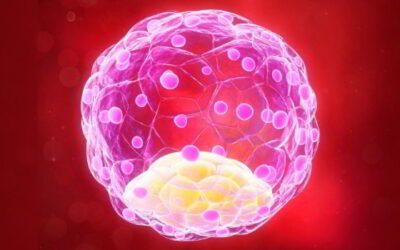According to many reports, the rates of pregnancy with embryos are more than that of fresh embryos. Frozen embryos provide many benefits to couples. Procedures with frozen embryos are much more effective and safe. It offers a wide range of options for people who are unable to conceive or want to delay pregnancy.
Blastocyst can be frozen, but there is a limitation for freezing the blastocyst. Hence, only the best and high graded quality embryos are selected for freezing for later use. Couples must know the limitations of the frozen embryos.
Here is some relevant information about the frozen embryos. So, just keep on reading!
Stages of the blastocyst that can be frozen
Embryos can be frozen at different stages of their development:
- 1 (pronuclear stage) when they are just a single cell.
- 2/3 at the two to the eight-cell stage.
- 5/6 in their development i.e. the blastocyst stage.
How long can blastocyst be frozen and still be operational?
The usual storage period of embryos is normally 10 years, while in certain conditions women can store their embryos for up to 55 years. The researchers notified that the longest period a human embryo has been stored is around 30 years. But once embryos have been frozen they can be stored for an unlimited time.
Those who have left embryos in storage for more than a decade typically do not use them. However, frozen embryos defrosted after nearly 20 years, still can produce healthy babies.
Frozen embryos are better than fresh embryos
A study published in the Fertility and Sterility reports journal found that a woman’s age is not the only effective factor when it comes to giving birth to a child following an embryo transfer. The study notified high responders to ovarian stimulation had 52 percent live birth (LBR) in frozen embryo cycles compared to 48.9 percent in fresh embryo cycles.
20+ Years Of Experience as Fertility Specialists
20 Years Of Experience as a Fertility Specialists
National Fertility Awards 2023
Call Us
+919990044555
When can frozen blastocysts be transferred?
Embryo transfer is usually done either on the fourth or sixth day of progesterone, depending on which day following the fertilization the embryo had been frozen. The second frozen embryo transfer (FET) protocol does not involve Lupron injection but simply includes the use of estrogen for up to three weeks.
Can day 3 embryos be frozen?
Not all embryos are suitable for freezing. Freezing and thawing (defrosting) can be harmful to the embryos, even in the presence of cryoprotectants. Embryos that are frozen between day 1 and day 3 should be developed about 70-80% to survive adequately well to be used later.
Percentage of the frozen embryo that can survive during the thawing period
The survival rate for thawed zygotes is 69%, for D3 embryos is 85%, and for blastocysts is 88%. The implantation rate per number of thawed zygotes is 10%, for D3 embryos is 12%, and for blastocysts is 14%.
Book An Appointment
Follow Us On
FURTHER READING
The success rate of frozen blastocyst transfer
Society for Assisted Reproductive Technology (SART) found that live birth rates (LBRs) for frozen eggs were
- 46.5 percent for women under the age of 35 years
- 38.6 percent for women between the age of 35 to 37 years
- 29.4 percent for women between the age of 38 to 40 years
- 25.9 percent for women who are 41 years old or above
All are remarkably higher than the fresh embryo transfer.
It is beneficial for
The frozen embryo may be a good option for certain people like:
1. The ones who are suffering from genetic disorders that affect reproduction.
2. The one who will soon undergo chemotherapy.
3. The one who depends on medicines to increase fertility.
4. The couples who are of the same gender and want to become parents.
5. The ones who are LGBTQ (lesbian, gay, bisexual, transgender, and queer or questioning).
Precautions you should take after the Frozen Blastocyst Transfer
1. Take your medicines as prescribed. Do not skip any dose and do not stop taking medicines in case you have bleeding at a certain time after the embryo transfer until the end of the first trimester of pregnancy.
2. Avoid hot baths, going to saunas, practicing hot yoga, and using hot water pads. These might raise the temperature of the uterus and cause miscarriage and increase the risk of the fetus.
3. Keep yourself happy to relieve the stress as laughter is a medicine for healthy living. It helps to increase the success rate of transfer.
It is not necessary to rest after the transfer procedure. Lying on the bed for days subsequently will not help the embryo implant and to be true. It may cause suffering rather than making progress in the growth of the embryo. You are recommended to take things easy. Further, you are advised to carry on with your everyday life activities as usual. Avoiding any harsh movements and tiring works are highly recommended.
Conclusion
The approach of frozen blastocyst transfer increases the chance of live birth compared with fresh blastocyst transfer. Thus, a frozen blastocyst proves to be more effective and safe. It leads to a successful pregnancy and delivery.
Share this with
Related Blogs
Why do blastocyst not implant?
The reasons for an unsuccessful implantation are very uncommon and rare as well. Blastocyst provides a greater chance of becoming pregnant therefore the procedure is handled properly as well.
What happens after blastocyst transfer?
Before jumping to the immediate question first let’s have a small brief of what is blastocyst transfer. Blastocyst transfer is the transfer of embryos that have achieved a higher stage of development.
Follow Us On
About Author





